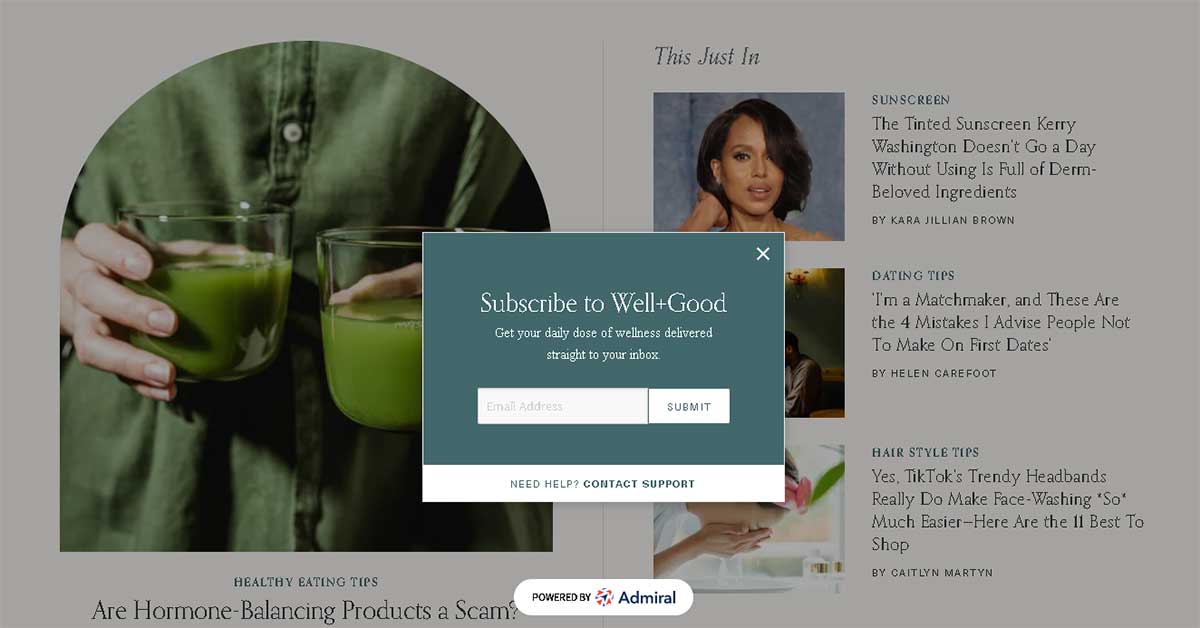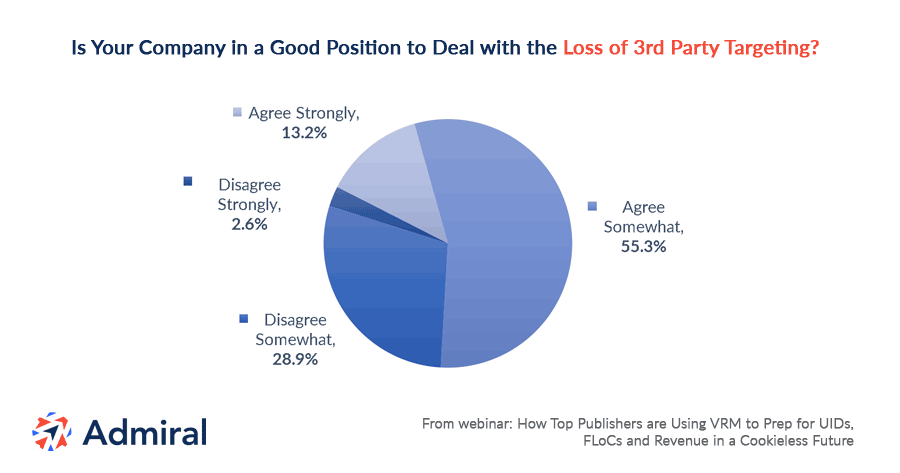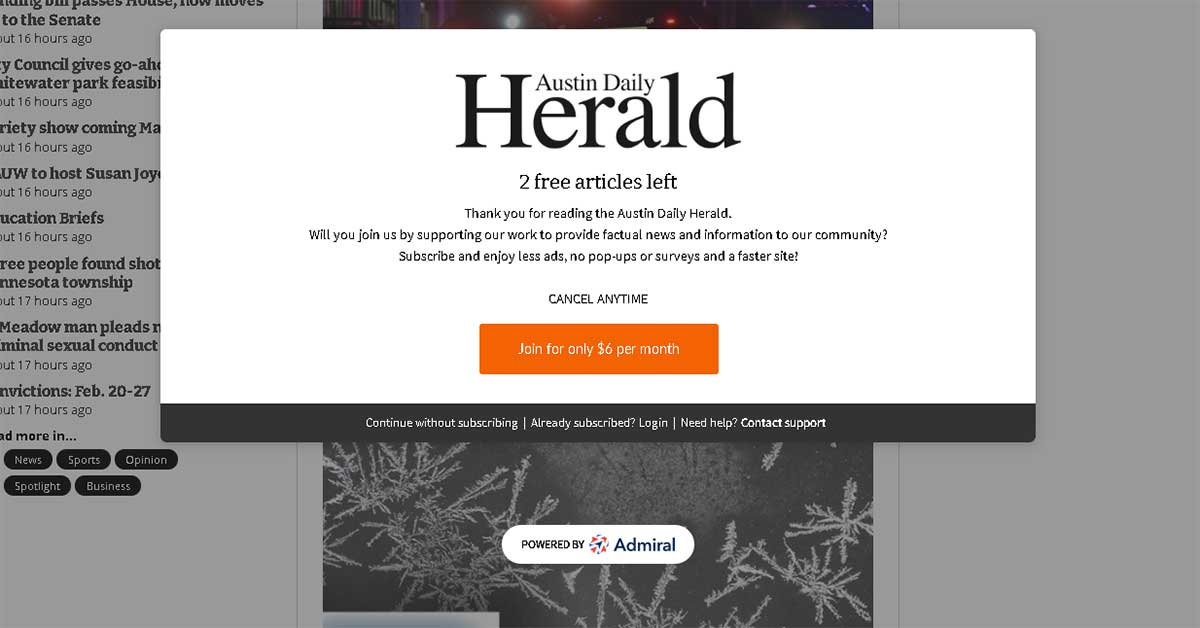
Digital marketing is entering a new era where privacy, consent, and trust are no longer optional, but essential. The deprecation of third-party cookies by major browsxers like Chrome, Safari, and Firefox is accelerating a fundamental shift in how publishers engage with and monetize their audiences. At the same time, global privacy regulations like GDPR, CCPA, and CPRA have tightened the rules around how data is collected and used online.
As third-party data becomes less reliable and more restricted, first-party data has emerged as the most valuable—and future-proof—asset in a publisher’s toolkit. Collected directly from your audience with their knowledge and consent, first-party data provides the foundation for personalized experiences, targeted advertising, and deeper reader relationships. It’s accurate, privacy-compliant, and entirely under your control.
In a world moving swiftly toward user-first experiences and data transparency, publishers who embrace a first-party data strategy today are positioning themselves to thrive tomorrow.
First-party data is the information a publisher collects directly from its audience through owned digital properties, such as website forms or email campaigns, with the user’s clear knowledge and consent. It’s the most accurate, relevant, and actionable data available because it reflects real interactions between a user and your content, brand, or platform.
To understand the value of first-party data, it’s helpful to compare it to second-party and third-party data.
Second-party data is essentially someone else’s first-party data shared with you through a partnership or agreement. While it can be useful, it lacks the same level of control, freshness, and transparency as data you collect yourself. It may be accurate, but it’s not exclusive to your brand.
Third-party data, on the other hand, is purchased from aggregators that compile information from multiple external sources. This type of data has been a cornerstone of digital advertising but is rapidly losing value due to privacy concerns, lack of consent, and increasing restrictions from browsers and regulators.
The ability to understand and engage audiences is a cornerstone of success for digital publishers. Historically, publishers relied heavily on third-party cookies to fuel personalization, ad targeting, and user insights. But those days are quickly coming to an end.
Major browsers like Google Chrome, Safari, and Firefox are phasing out third-party cookies, drastically reducing publishers’ access to externally sourced audience data. At the same time, sweeping privacy regulations such as GDPR, CCPA, and CPRA are enforcing stricter standards for data transparency and consent. These changes have not only altered the digital landscape, they’ve reset the rules for how publishers can legally and ethically collect and use data.
First-party data is the only sustainable path forward in this new environment. It offers publishers direct ownership of audience insights gathered through consent-based interactions on their own platforms. That ownership translates to greater control, compliance, and flexibility, especially as advertisers increasingly shift their budgets toward media partners that can deliver authenticated, privacy-safe audiences.
Beyond compliance, first-party data collection and strategy open the door to diverse revenue opportunities. Publishers can use first-party data to grow subscriber bases, personalize content experiences, build more valuable advertising segments, and offer premium audience packages to direct-sold advertisers. When you own your audience relationship, you unlock the full potential of your community and brand.
A No-Code Solution to Turn First-Party Data into Revenue
First-party data is both a compliance solution and a powerful growth engine strategy. When publishers harness the data they collect directly from their audiences, they unlock new ways to increase engagement, drive revenue, and create more personalized experiences that keep users coming back. Here are five proven use cases where first-party data delivers tangible impact:

Email remains one of the highest-ROI channels in digital publishing. By using first-party data to identify engaged visitors, publishers can target them with optimized email capture offers timed to appear after specific behaviors like reading three articles or scrolling 75% of the page. Once subscribers are onboarded, publishers can segment them based on interests, frequency, and location to deliver targeted newsletters or promotional content that drives traffic and ad revenue.
First-party data enables real-time content personalization by identifying what users are reading, searching for, or engaging with most. Instead of delivering generic content, publishers can recommend articles, videos, or topics that closely match each visitor’s interests. Users spend more time on site, view more pages per session, and engage more deeply overall as a result. This increased activity leads to better user satisfaction while also improving ad viewability and creating stronger monetization opportunities.

As third-party targeting options fade, advertisers are placing higher value on publishers who can offer audience insights tied to real user behavior. First-party data empowers publishers to create custom audience segments—such as “sports readers in Chicago” or “frequent tech readers on mobile”—that can be sold directly to advertisers. These data-enriched placements often command higher CPMs and open the door to premium sponsorships.
Not all visitors are equally ready to subscribe. First-party data allows publishers to identify high-intent users—such as those who visit repeatedly, consume premium content, or engage with long-form articles—and target them with subscription offers at the right moment. Using a data-driven approach outperforms generic popups and increases conversion rates without damaging the user experience.

/Connect_Montage_2_16x9.png)
By tracking visitor behavior over time, publishers can build rich profiles that reveal how users engage, convert, and churn. Such insight powers smarter editorial decisions, improved UX, and lifecycle marketing campaigns that re-engage dormant readers or upsell loyal ones. It’s not just about identifying your audience; first-party data helps you understand how to serve them better and expand your reach.
First-party data holds tremendous value, but many publishers run into roadblocks that make it difficult to turn that potential into performance. Here are four of the most common roadblocks:

Many publishers still depend heavily on behavioral signals such as clicks, scrolls, or time on page to interpret user interests. While helpful, these signals can be vague or misleading. Without directly asking users about their preferences or needs, publishers risk misclassifying audience segments and missing opportunities for more relevant, higher-converting engagement.
When audience data is scattered across disconnected systems like CRMs and ad servers, gaining a unified view becomes nearly impossible. That fragmentation often leads to misaligned campaigns, repetitive work, and inconsistent user experiences. The more disconnected your tools, the harder it becomes to link user acquisition to actual revenue outcomes.
/Data_Silos_600p.jpg)
/Connect_Montage_1200x630.png)
Collecting first-party data is only the first step. The real value comes from turning that data into actionable insights—like identifying who’s ready to subscribe, which segments drive the most revenue, or which visitors are primed for re-engagement. Many publishers struggle to translate raw interactions into audience segments that can be used for ad targeting, email personalization, or content recommendations.
Even when high-quality data exists, activating it at scale is a challenge. Without automation, triggering the right offer at the right moment or syncing segments to ad platforms requires manual work and complex workflows. This slows down speed to value and limits the ability to personalize experiences or deliver high-CPM audience packages in real time.
/Man_frustrated_data.jpg)
Publishers today have access to a variety of platforms promising better data management, targeting, and personalization, but not all tools are created equal. While customer data platforms (CDPs), customer relationship management (CRM) systems, and adtech solutions have their place, many were designed when third-party cookies still ruled and user consent wasn’t front and center. Most of these systems struggle to support the kind of real-time, privacy-first, and visitor-level engagement publishers need in the post-cookie world.
Admiral Connect unlocks the full potential of CDP and CRM platforms by filling in the gaps they weren’t built to cover, especially at the anonymous visitor stage where most data opportunities are lost. Here’s how Admiral Connect complements other common solutions:
|
Solution |
Focus |
Weakness |
How Admiral Connect Enhances It |
|
Traditional CDPs |
Aggregate implied first-party data |
Do not collect declared data from visitors directly |
Admiral Connect enables direct data collection and activation |
|
CRMs |
Store customer data post-registration |
Don’t help grow or segment anonymous visitors |
Admiral Connect works before and after authentication |
|
AdTech Platforms |
Target based on cookies or IDs |
Losing accuracy post-cookie era |
Admiral Connect builds segments based on owned, consented visitor data |
A strong first-party data strategy starts with trust rather than technology. To build an audience that’s willing to share valuable information, publishers must create experiences that are transparent, respectful, and rewarding. The goal is to collect high-quality, permission-based data in ways that feel natural and aligned with the user’s interests. Below are five best practices that help turn anonymous visitors into engaged audiences.
Data collection should enhance—not interrupt—the reader journey. Whether you're asking for an email address or prompting a user to register, timing and context are everything. A well-designed prompt that appears after a user has shown interest (like reading halfway through an article) is far more effective than a pop-up that appears the moment they land on the page.
Best Practice: Test trigger prompts after scroll depth, time on page, or exit intent to find the right fit for your audience.
Pro Tip: Use A/B testing to optimize the timing, placement, and design of your prompts for higher opt-in rates. And Admiral offers frequency caps, to ensure no visitor is engaged too often within a set time period.
People are more willing to share personal information when the value they receive in return is clear and compelling, such as exclusive content, a special offer, or access to premium features.
Example: Use Admiral Connect to offer birthday-based discounts or premium gated content access in exchange for email sign-up.
Why it works: It creates a mutually beneficial moment where the user sees a direct reward for sharing their data, which boosts conversion and satisfaction.
Don’t rely solely on assumptions from browsing behavior. Instead, invite users to share preferences, interests, and demographics explicitly, which is known as zero-party data. When users volunteer this information, you can tailor experiences with far greater accuracy.
Example: Admiral Connect’s Data Offers allow publishers to easily deploy surveys, modals, or polls that collect declared data.
When to use: During onboarding flows, newsletter signups, or in moments of high engagement (e.g., after a second article view or subscription page visit).
You don’t need to collect all your data in one interaction. Asking for too much too soon can discourage users. Instead, build a progressive profiling strategy starting with low-barrier asks (like email) and gradually collect deeper data points as trust grows.
Example: Begin by asking about content preferences. Later, prompt users to share subscription interests or purchasing intent.
Why it matters: This approach reduces user friction, increases completion rates, and results in more complete, accurate user profiles over time.
/Progressive_Profiling.png?width=700&height=383&name=Progressive_Profiling.png)
Users are more likely to share data when they feel confident it will be handled responsibly. Make your privacy practices visible and understandable, especially at the moment of data collection, to show that you're a responsible steward of their information.
Best Practice: Include concise explanations and links to your privacy policy within any form or data collection interface.
Once publishers establish a solid foundation for collecting first-party data, the next step is to activate and scale it. That means enriching user profiles, deepening segmentation, and using the data to personalize experiences and drive higher-value monetization. Below are three key strategies to turn raw data into long-term revenue and engagement gains.
First-party data fuels meaningful personalization. By organizing your audience into dynamic segments based on behavior, preferences, and declared intent, you can tailor every touchpoint from newsletters and content recommendations to on-site messages and subscription offers.
With Admiral Connect, publishers can create and manage visitor segments without relying on developers or external tools. Whether you're targeting casual readers with curated content or re-engaging dormant subscribers with timely offers, segmentation allows for smarter, more relevant user journeys that increase engagement and lifetime value.
Growing your pool of known users is one of the most effective ways to future-proof your data strategy. First-party data becomes even more powerful when it's tied to a registered or logged-in user. Encouraging anonymous visitors to create an account or sign up for a newsletter not only boosts identity resolution, but also gives you access to deeper insights over time.
Admiral Connect helps publishers move users from anonymous to authenticated by optimizing login prompts, registration flows, and value-driven calls to action. Once authenticated, users can be tracked separately, enabling more consistent personalization across sessions and devices and unlocking access to premium content, targeted experiences, or paywalled offerings.
Advertisers are increasingly seeking privacy-compliant ways to reach high-value audiences. With Admiral Connect, publishers can push enriched, consented audience segments directly to platforms like Google Ad Manager (GAM). These segments, built on user behaviors, interests, and declared intent, offer advertisers better targeting and improved ROI.
The result? More valuable, first-party-powered ad inventory that can command higher CPMs, support direct-sold campaigns, and create audience packages that advertisers can’t get anywhere else. Instead of relying on outdated cookie pools, you can monetize your owned audience data in ways that are scalable, compliant, and advertiser-ready.
Collecting first-party data is just the beginning. The real value comes from activating that data and turning it into personalized experiences, smarter monetization, and actionable insights across your publishing ecosystem. With Admiral Connect, publishers can move seamlessly from data collection to segmentation to activation—all in real time and with minimal technical lift.
Effective data activation requires three essential steps:
Collect: Use Admiral Connect to gather high-quality, consented data directly from your visitors like email addresses, content preferences, and engagement behaviors.
Segment: In one simple click, you can organize visitors into meaningful groups based on their behaviors and attributes using Admiral Connect. For example, you might create segments for Adblock Users, Golf Enthusiasts, or Potential Subscribers who have shown repeated interest in premium content.

Activate: Put those segments to work by easily syncing Admiral Connect to ad platforms, triggering personalized offers, or tailoring on-site experiences. Whether you're driving subscriptions, increasing engagement, or boosting ad revenue, activation ensures your data works for you.

Admiral Connect is built to integrate easily with your existing tech stack.
Freemium plan available. Get started with powerful capabilities at no cost and scale as your strategy evolves.
The publishing industry is at a turning point. As third-party cookies disappear and privacy regulations continue to evolve, publishers who rely on outdated data strategies risk losing both audience insight and advertiser trust. But those who embrace first-party data are setting themselves up to thrive, not just survive, in the next era of digital engagement.
By investing in first-party data collection, segmentation, and activation, you gain full control over your audience relationships. You unlock more accurate targeting, personalized experiences, higher conversion rates, and premium ad opportunities—all built on a foundation of transparency and trust.
Admiral Connect empowers publishers to do exactly that. From capturing consented visitor data to enriching audience profiles and activating real-time segments, it’s the all-in-one solution for future-proofing your revenue and owning your audience.
